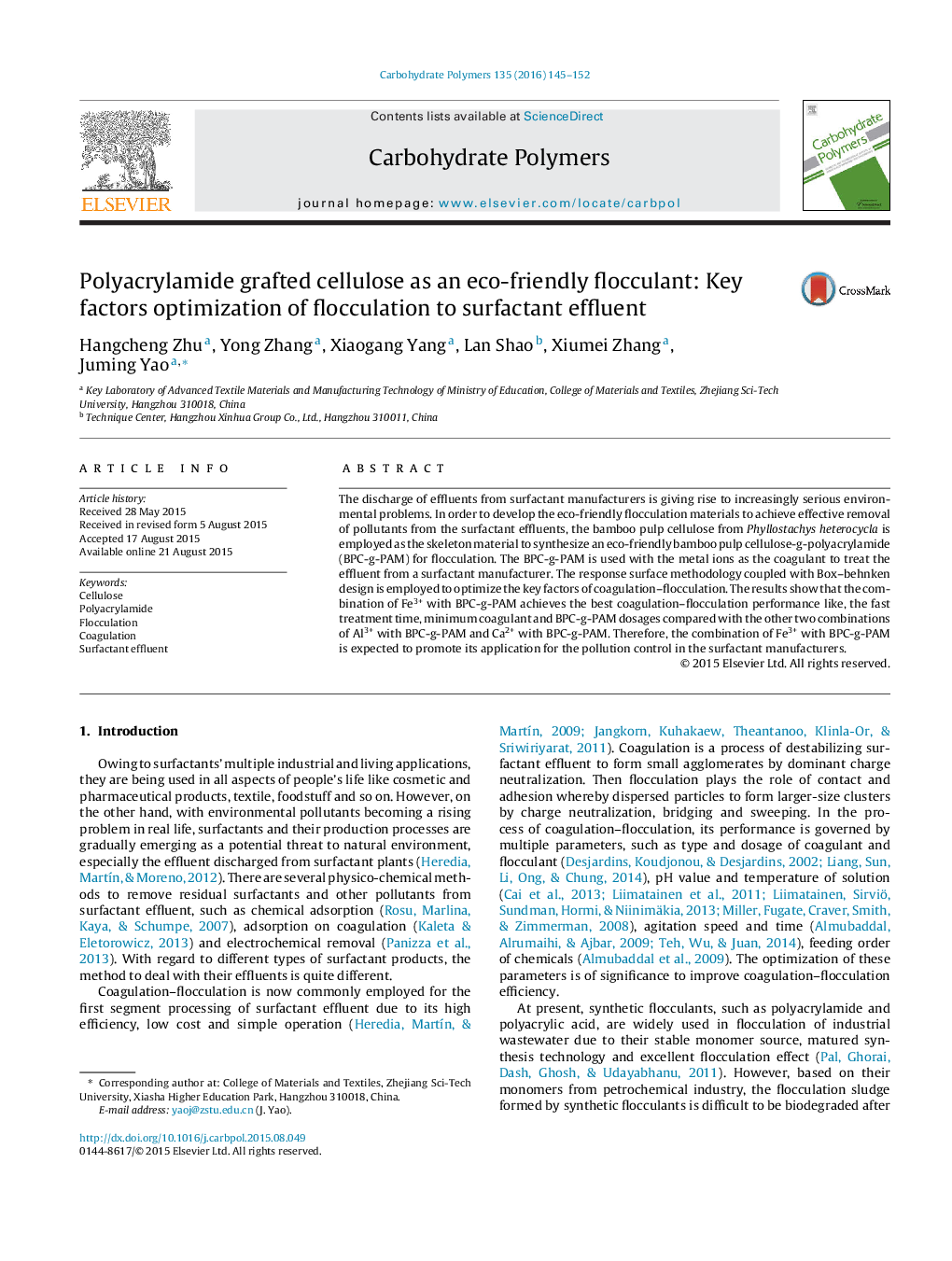| Article ID | Journal | Published Year | Pages | File Type |
|---|---|---|---|---|
| 1383555 | Carbohydrate Polymers | 2016 | 8 Pages |
•An eco-friendly flocculant was synthesized based on cellulose from Phyllostachys heterocycla.•Coagulation–flocculation technique was selected to treat surfactant effluent.•Coagulation–flocculation behavior of BPC-g-PAM with Al3+, Fe3+, Ca2+ were studied.•RSM-BBD was employed to optimize key factors of coagulation–flocculation process.•Fe3+ + BPC-g-PAM combination achieved the best coagulation–flocculation performance.
The discharge of effluents from surfactant manufacturers is giving rise to increasingly serious environmental problems. In order to develop the eco-friendly flocculation materials to achieve effective removal of pollutants from the surfactant effluents, the bamboo pulp cellulose from Phyllostachys heterocycla is employed as the skeleton material to synthesize an eco-friendly bamboo pulp cellulose-g-polyacrylamide (BPC-g-PAM) for flocculation. The BPC-g-PAM is used with the metal ions as the coagulant to treat the effluent from a surfactant manufacturer. The response surface methodology coupled with Box–behnken design is employed to optimize the key factors of coagulation–flocculation. The results show that the combination of Fe3+ with BPC-g-PAM achieves the best coagulation–flocculation performance like, the fast treatment time, minimum coagulant and BPC-g-PAM dosages compared with the other two combinations of Al3+ with BPC-g-PAM and Ca2+ with BPC-g-PAM. Therefore, the combination of Fe3+ with BPC-g-PAM is expected to promote its application for the pollution control in the surfactant manufacturers.
Graphical abstractSynthesis of eco-friendly cellulose-polyacrylamide flocculant and its proposal flocculation mechanism to surfactant effluent.Figure optionsDownload full-size imageDownload as PowerPoint slide
